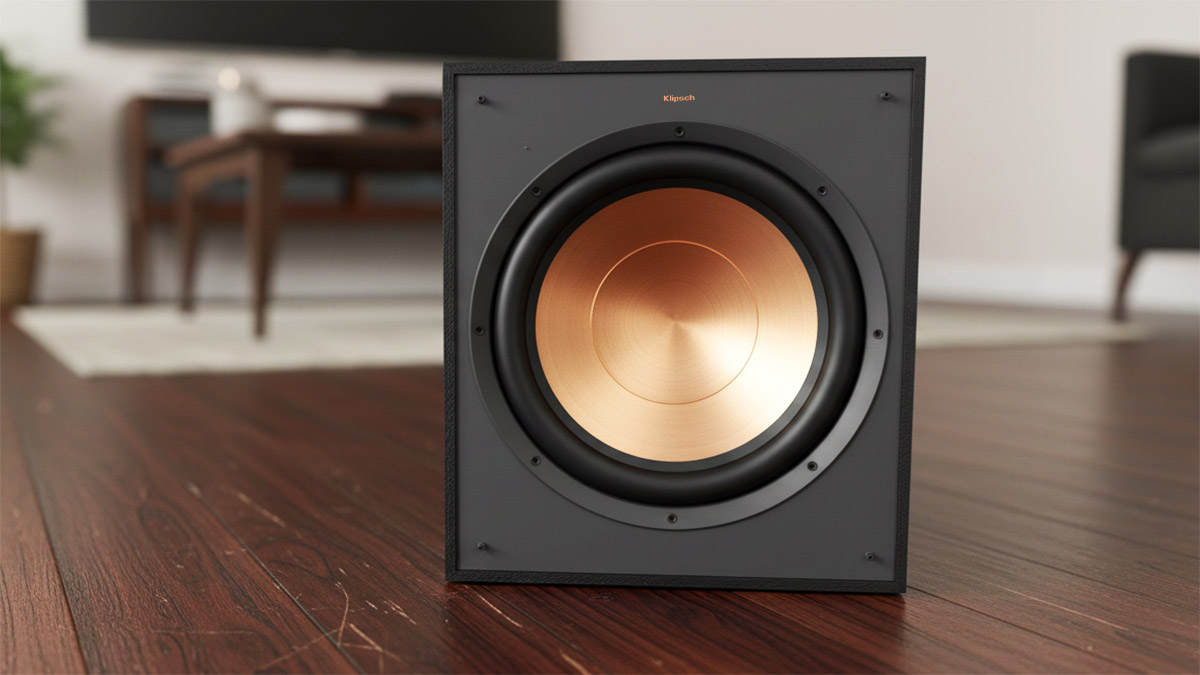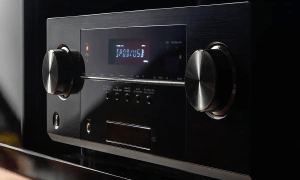You want better bass without snaking a long cable across the room. A wireless kit promises easy placement and a tidy floor, while a classic RCA run promises rock solid performance. Which approach should you trust, and when? Here’s the straight answer from a setup perspective, with specific gear picks.
What “wireless” really means
No subwoofer is truly cable free. The box still needs a wall outlet. In most home theaters, “wireless” means you add a small transmitter at your receiver’s sub output, then park a matching receiver near the sub’s line input. The link is usually a dedicated 2.4 or 5.8 gigahertz radio channel, not Bluetooth. That detail matters, because these purpose built links keep latency much lower than typical Bluetooth audio. As a reference point, popular home theater adapters tend to land around fifteen to twenty milliseconds of delay, which is far lower than Bluetooth.
Bluetooth, by contrast, often sits well over one hundred milliseconds and can stretch to two hundred or more depending on codec and devices. That is why it’s a poor choice for a subwoofer link. The ear reads that much delay as sluggish bass and obvious lip sync errors.
Will latency ruin the timing
Not if you set distance correctly. Sound travels roughly 343 meters per second. A 20 millisecond radio delay equals about 6.9 meters of extra “distance.” Your receiver’s distance setting is literally a delay line, so add about seven meters, or around twenty three feet, to the sub distance and you’re back in time alignment. Many wireless kits land between fourteen and twenty milliseconds, so that quick rule works well. If your receiver runs automatic room correction, it will usually detect the added delay and set an appropriate sub distance for you. If bass sounds a hair late, nudge the sub distance farther until kick drums feel tight.
Reliability, the real world view
A wire is still the most reliable link. It’s immune to the neighbor’s router, the microwave, or a crowded condo. If you can run a quality shielded subwoofer cable under a rug or along the baseboard without tripping hazards, you can forget about radio traffic forever. If you can’t, well designed wireless kits are very dependable in normal homes.
How dependable depends on your radio neighborhood. The 2.4 gigahertz band travels through walls better, yet it’s busy with smart home gadgets. Five gigahertz offers more channels and less congestion, though range is shorter and walls are tougher. Tri band systems that can hop among 2.4 and two separate five gigahertz channels are built to dodge trouble in crowded apartments. That’s why tri band sub adapters exist, and why they’re the safer bet if you already fight for bandwidth at home.
What about interference with your Wi Fi
Most modern wireless sub links use their own channel and protocol rather than joining your home Wi Fi, so they don’t slow your internet. Still, radio is radio. Keep the transmitter out from behind a metal door or inside a rack if you can. Avoid stacking it on the router itself. If you hear dropouts, try moving the transmitter six to twelve inches, or switch the kit to another channel if it offers one. These small moves often restore a clean link.
When wireless is the better answer
If your best sub location is across the room, behind a sofa, or mid wall where a cable would be ugly, a good wireless kit saves your layout. If you rent, or you change your room often, the flexibility is worth it. In a living room that doubles as a theater, the freedom to put the sub where it balances the room, not where the cable reaches, is a bigger audible upgrade than the tiny risk of a dropout once a month.
When a cable still wins
If you run lossless audio through a processor and want zero added variables, use a wire. If your receiver rack and sub sit on the same wall and you can hide a cable cleanly, use a wire. For long runs, pick a well shielded RCA subwoofer cable. If you must cross power cords, do it at a right angle. If you get a ground loop hum with a very long run, a simple isolation transformer inline at the sub usually solves it.
Model picks that work
Best all round wireless adapters
SVS SoundPath Wireless Audio Adapter for simple rooms, low latency and clean performance. Use the SoundPath Tri Band if your home is packed with devices and you want a link that can hop to clear channels automatically.
Low latency for theater use
REL HT Air MKII is purpose built for subwoofers and quotes a response time in the same low tens of milliseconds as the best adapters. It runs on 5.8 gigahertz and is easy to pair. The range is generous for most living rooms.
Brand specific kits
Some sub brands offer their own modules, like KEF’s KW1 and Klipsch’s WA 2 for compatible models. If your sub accepts a proprietary dongle, that can be a neat, compact solution, though specs vary by brand.
Good cables when you can run them
A basic, well shielded subwoofer cable from a reputable maker is all you need. You do not need exotic wire. If you’re routing along a wall, use paintable cord channels to keep it discreet.
Practical setup tips that prevent headaches
Place first, connect second. Use a bass sweep or a bass heavy track and slide the sub along the front wall or the wall beside your seat. Stop where notes sound even rather than boomy. If you’re using wireless, plug the receiver near that spot and check signal strength before you commit to furniture.
Mind line of sight. You don’t need perfect line of sight, yet raising the transmitter a few inches above shelf height or placing it on top of the receiver instead of behind it can improve stability.
Set distance, then level. After pairing, add about twenty feet to your sub distance or let the receiver set it during auto calibration. Once timing feels tight, trim level by one or two decibels so voices stay natural and bass integrates rather than dominates.
Avoid Bluetooth for the main link. Bluetooth is fine for phone music, not for a theater grade sub. Latency is too high and varies with every device pair. Use the dedicated kit or a wire instead.
Know when a dropout isn’t radio. If the bass vanishes only on a specific app or input, you may be hitting a format or handshake issue. Wireless doesn’t change the content format. Check the receiver’s bass management and make sure the sub is set to LFE or LFE plus mains as intended.
Edge cases and honest tradeoffs
Some soundbar systems use their own wireless link for the matching sub, and the bar already compensates for delay, so you do not need to set distance. At the other extreme, a separates based theater with tight bass management, two subs, and high playback levels is usually happier with a cable. Fewer variables make results easier to verify.
So, should you trust wireless or run a cable
Run a cable if you can do it cleanly and you want a set and forget solution with zero radio variables. Trust a good wireless kit when placement freedom unlocks better bass or when a wire would be impractical or unsafe across a traffic path. The better adapters add only a few frames of delay, which your receiver can absorb with a distance setting. In small and medium rooms, placement freedom often beats the small theoretical advantage of a wire, because the right location does more for smooth, even bass than anything else. Pick the approach that lets you put the sub where it sounds best, add the simple delay math, and enjoy bass that feels fast, even, and reliably present every night.
Teksignal.com participates in the Amazon Services LLC Associates Program, an affiliate advertising program designed to provide a means for sites to earn advertising fees by advertising and linking to Amazon.com



























